Abstract
The antibacterial activities of ticarcillin, carbenicillin, tobramycin, and gentamicin and of combinations of these antibiotics were measured against Pseudomonas aeruginosa and other gram-negative bacilli in vitro and in experimental mouse infections. Synergistic effects were produced by the penicillin/aminoglycoside combinations in growth inhibition tests and in bactericidal tests against many of the bacteria tested. Combinations of ticarcillin + tobramycin were more active in vitro than carbenicillin + gentamicin against P. aeruginosa but were no more active than the latter against other gram-negative bacilli. Ticarcillin + tobramycin and carbenicillin + gentamicin also demonstrated synergistic activities against P. aeruginosa, Escherichia coli, and Enterobacter cloacae in experimental mouse infection models. Thus, the penicillin/aminoglycoside combinations produced greater protective effects than the individual antibiotics against lethal intraperitoneal infections and also were more effective in reducing kidney counts of viable bacteria and kidney abscess formation in experimental pyelonephritis infections. As was the case in vitro, ticarcillin + tobramycin was more effective than carbenicillin + gentamicin against the experimental P. aeruginosa infections. The results of these in vitro and in vivo studies suggest that combined therapy with ticarcillin and tobramycin may be warranted in the treatment of serious infections due to P. aeruginosa and Enterobacteriaceae.
Full text
PDF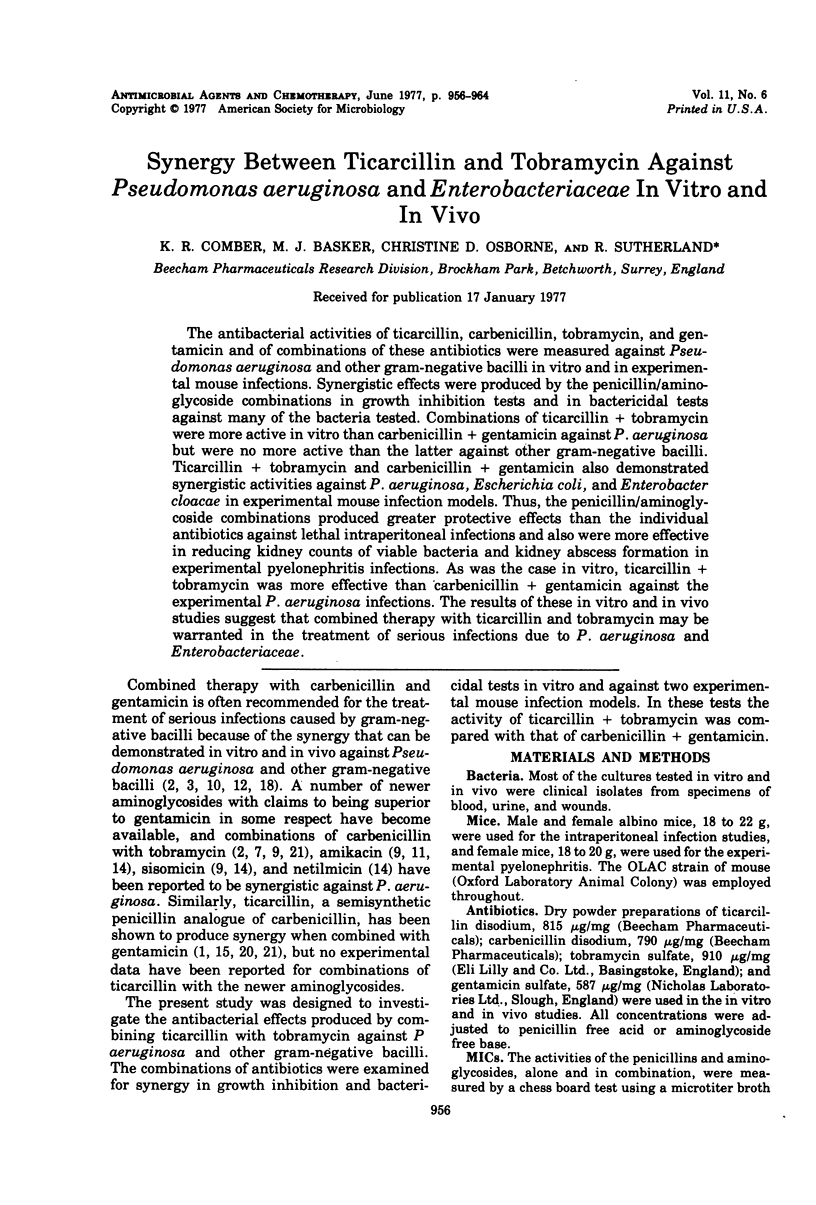
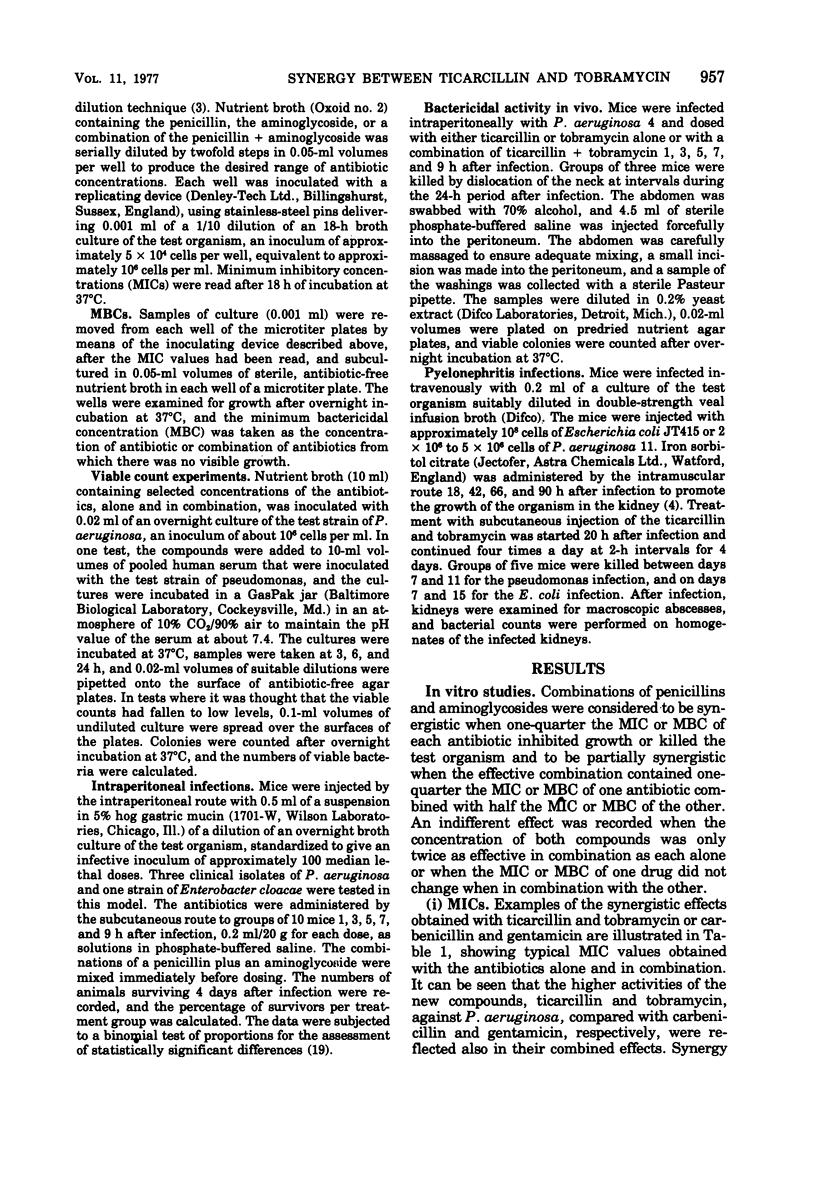
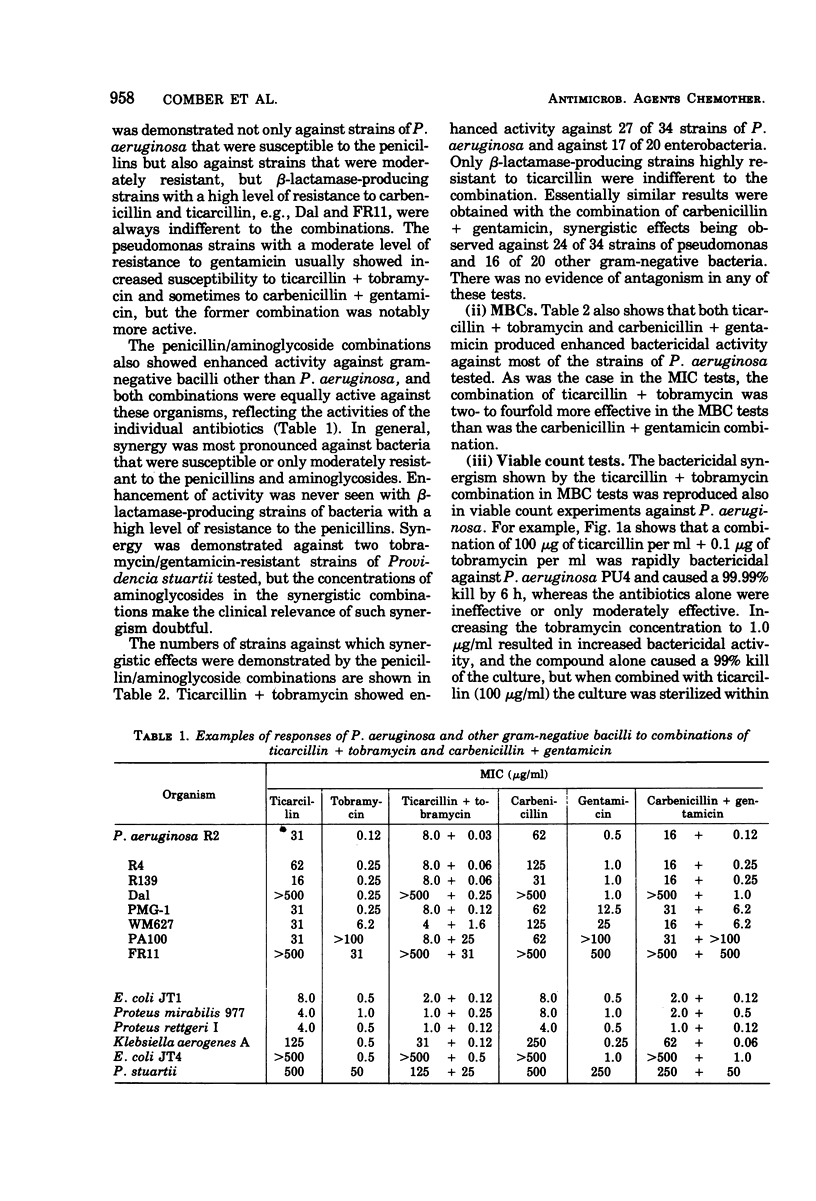
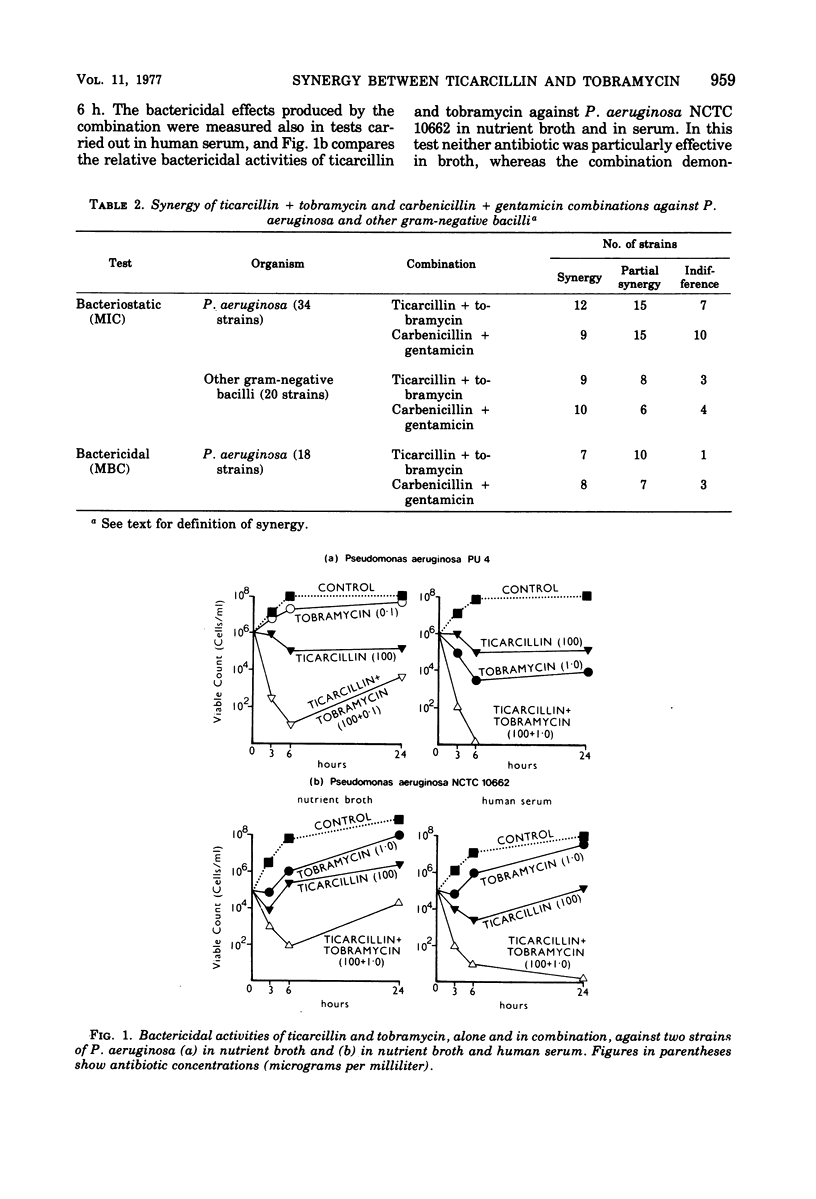
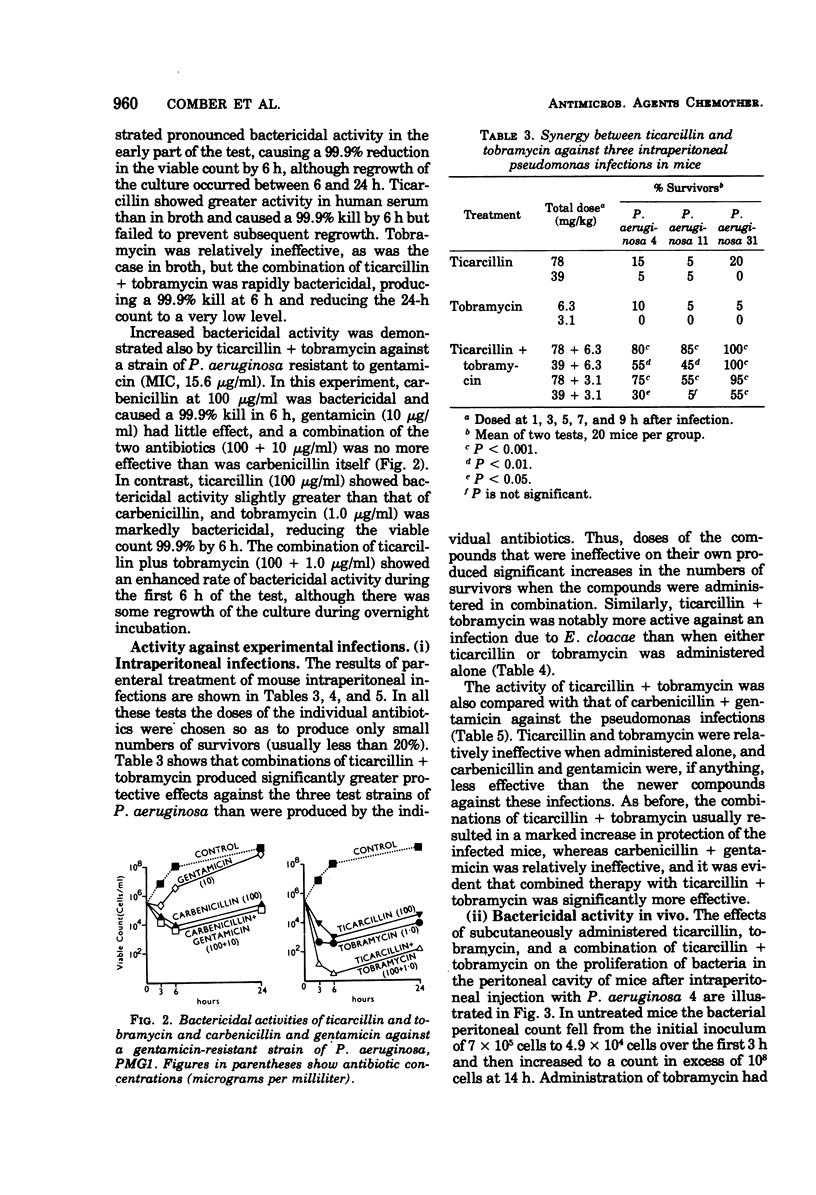
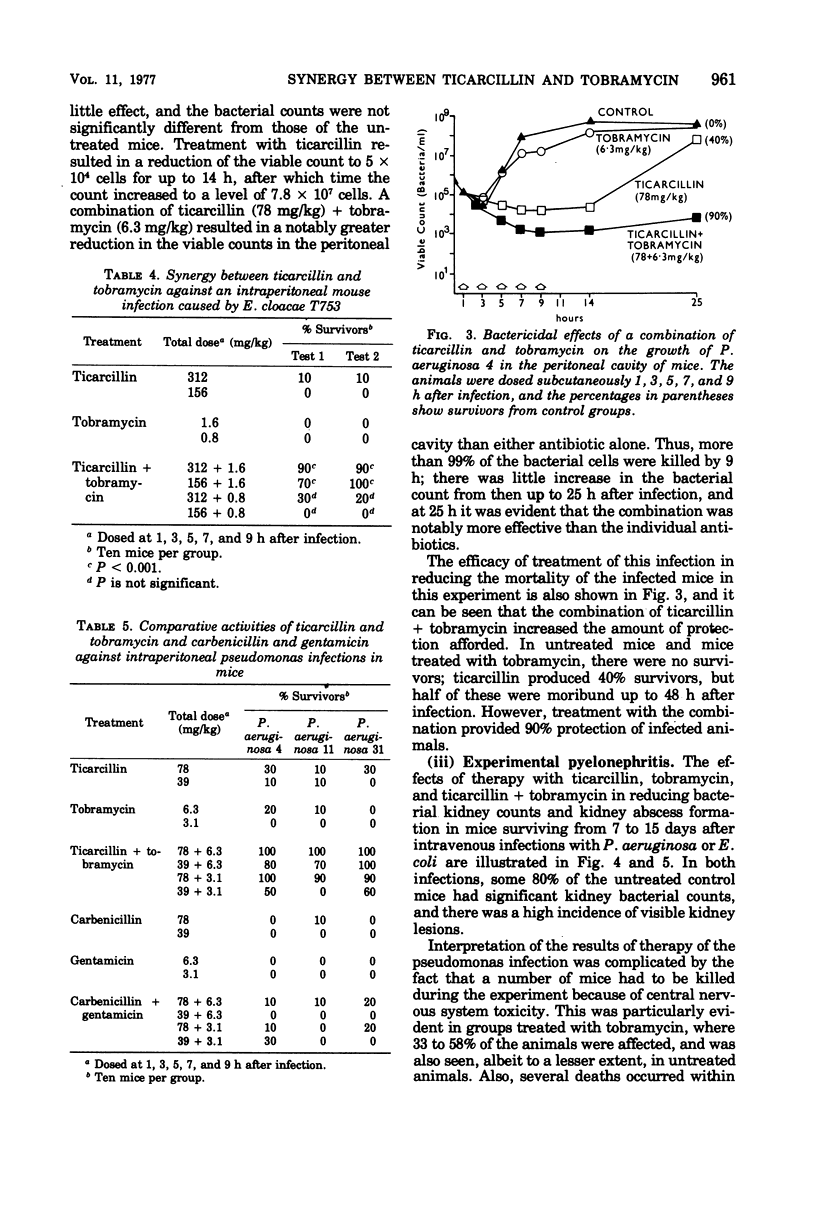
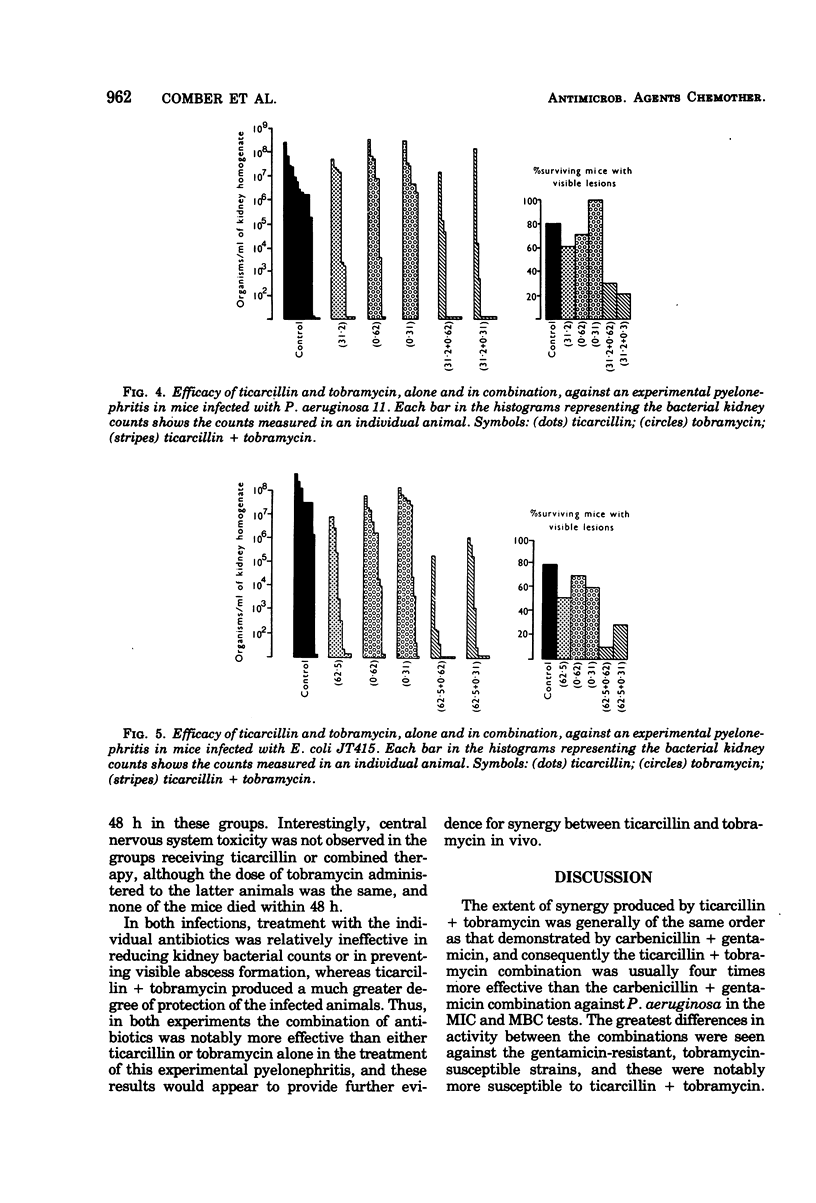

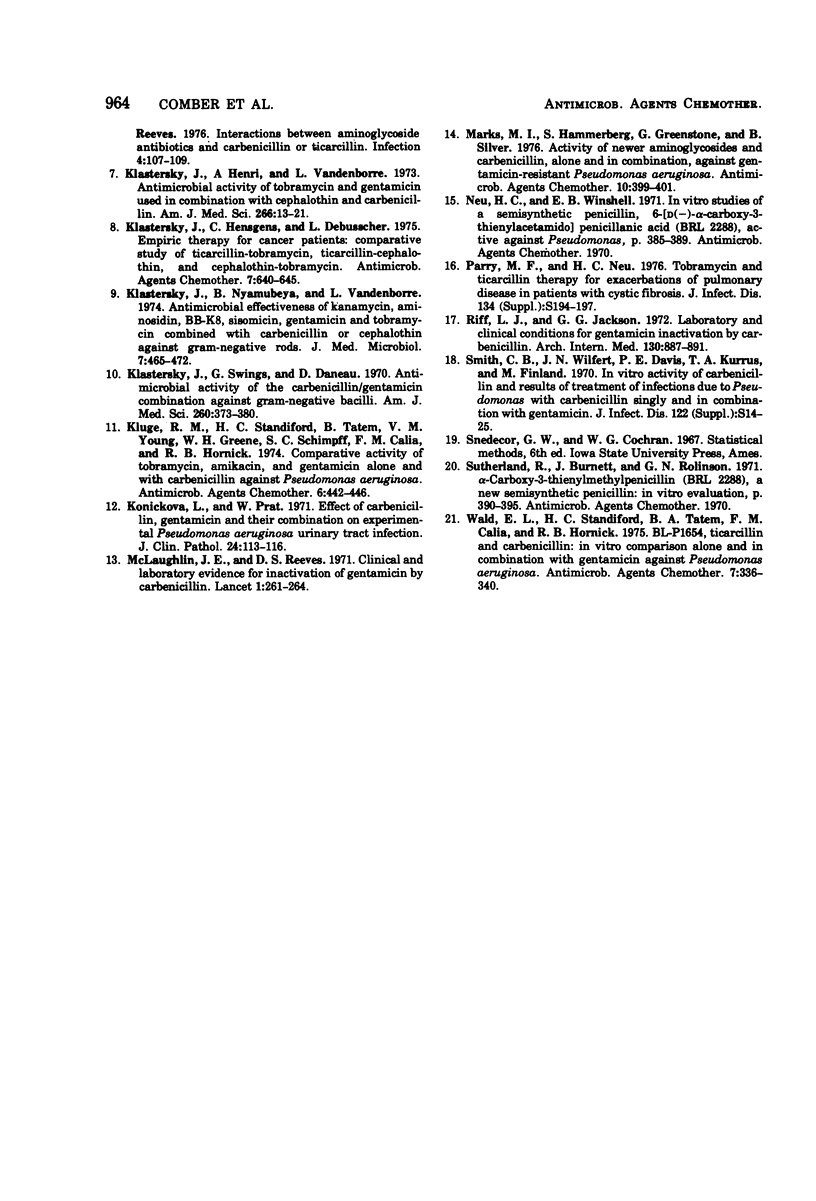
Selected References
These references are in PubMed. This may not be the complete list of references from this article.
- Anderson E. L., Gramling P. K., Vestal P. R., Farrar W. E., Jr Susceptibility of Pseudomonas aeruginosa to tobramycin or gentamicin alone and combined with carbenicillin. Antimicrob Agents Chemother. 1975 Sep;8(3):300–304. doi: 10.1128/aac.8.3.300. [DOI] [PMC free article] [PubMed] [Google Scholar]
- Andriole V. T. Synergy of carbenicillin and gentamicin in experimental infection with Pseudomonas. J Infect Dis. 1971 Dec;124 (Suppl):S46–S55. doi: 10.1093/infdis/124.supplement_1.s46. [DOI] [PubMed] [Google Scholar]
- Davies M., Morgan J. R., Anand C. Interactions of carbenicillin and ticarcillin with gentamicin. Antimicrob Agents Chemother. 1975 Apr;7(4):431–434. doi: 10.1128/aac.7.4.431. [DOI] [PMC free article] [PubMed] [Google Scholar]
- Holt H. A., Broughall J. M., McCarthy M., Reeves D. S. Interactions between aminoglycoside antibiotics and carbenicillin or ticarillin. Infection. 1976;4(2):107–109. doi: 10.1007/BF01638726. [DOI] [PubMed] [Google Scholar]
- Klastersky J., Henri A., Vandenborre L. Antimicrobial activity of tobramycin and gentamicin used in combination with cephalothin and carbenicillin. Am J Med Sci. 1973 Jul;266(1):13–21. doi: 10.1097/00000441-197307000-00002. [DOI] [PubMed] [Google Scholar]
- Klastersky J., Hensgens C., Debusscher L. Empiric therapy for cancer patients: comparative study of ticarcillin-tobramycin, ticarcillin-cephalothin, and cephalothin-tobramycin. Antimicrob Agents Chemother. 1975 May;7(5):640–645. doi: 10.1128/aac.7.5.640. [DOI] [PMC free article] [PubMed] [Google Scholar]
- Klastersky J., Nyamubeya B., Vandenborre L. Antimicrobial effectiveness ofkanamycin, aminosidin, BB-K8, sisomicin, gentamicin and tobramycin combined with carbenicillin or cephalothin against gram-negative rods. J Med Microbiol. 1974 Nov;7(4):465–472. doi: 10.1099/00222615-7-4-465. [DOI] [PubMed] [Google Scholar]
- Klastersky J., Swings G., Daneau D. Antimicrobial activity of the carbenicillin-gentamicin combination against gram-negative bacilli. Am J Med Sci. 1970 Dec;260(6):373–380. doi: 10.1097/00000441-197012000-00006. [DOI] [PubMed] [Google Scholar]
- Kluge R. M., Standiford H. C., Tatem B., Young V. M., Greene W. H., Schimpff S. C., Calia F. M., Hornick R. B. Comparative activity of tobramycin, amikacin, and gentamicin alone and with carbenicillin against Pseudomonas aeruginosa. Antimicrob Agents Chemother. 1974 Oct;6(4):442–446. doi: 10.1128/aac.6.4.442. [DOI] [PMC free article] [PubMed] [Google Scholar]
- Konícková L., Prát V. Effect of carbenicillin, gentamicin, and their combination on experimental Pseudomonas aeruginosa urinary tract infection. J Clin Pathol. 1971 Mar;24(2):113–116. doi: 10.1136/jcp.24.2.113. [DOI] [PMC free article] [PubMed] [Google Scholar]
- Marks M. I., Hammerberg S., Greenstone G., Silver B. Activity of newer aminoglycosides and carbenicillin, alone and in combination, against gentamicin-resistant Pseudomonas aeruginosa. Antimicrob Agents Chemother. 1976 Sep;10(3):399–401. doi: 10.1128/aac.10.3.399. [DOI] [PMC free article] [PubMed] [Google Scholar]
- McLaughlin J. E., Reeves D. S. Clinical and laboratory evidence for inactivation of gentamicin by carbenicillin. Lancet. 1971 Feb 6;1(7693):261–264. doi: 10.1016/s0140-6736(71)91001-4. [DOI] [PubMed] [Google Scholar]
- Parry M. F., Neu H. C. Tobramycin and ticarcillin therapy for exacerbations of pulmonary disease in patients with cystic fibrosis. J Infect Dis. 1976 Aug;134 (Suppl):S194–S197. doi: 10.1093/infdis/134.supplement_1.s194. [DOI] [PubMed] [Google Scholar]
- Riff L. J., Jackson G. G. Laboratory and clinical conditions for gentamicin inactivation by carbenicillin. Arch Intern Med. 1972 Dec;130(6):887–891. [PubMed] [Google Scholar]
- Wald E. R., Standiford H. C., Tatem B. A., Calia F. M., Hornick R. B. BL-P1654, ticarcillin, and carbenicillin: in vitro comparison alone and in combination with gentamicin against Pseudomonas aeruginosa. Antimicrob Agents Chemother. 1975 Mar;7(3):336–340. doi: 10.1128/aac.7.3.336. [DOI] [PMC free article] [PubMed] [Google Scholar]


